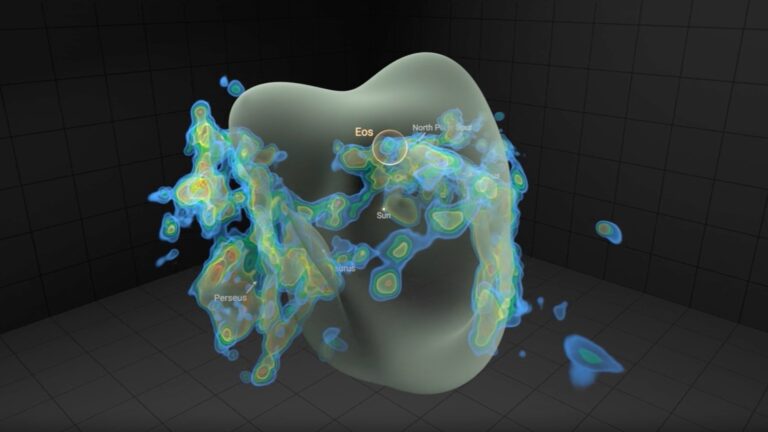Glaciers are “bleeding” due to a troubling phenomenon, and experts are warning about its global impact. – Farmingdale Observer
2025-04-18T21:21:00Z
The phenomenon of “bleeding glaciers” has recently captured scientific attention, revealing a disturbing ecological warning sign. These massive ice formations, once pristine white monuments of nature, now display alarming red patches that researchers compare …
The phenomenon of “bleeding glaciers” has recently captured scientific attention, revealing a disturbing ecological warning sign. These massive ice formations, once pristine white monuments of nature, now display alarming red patches that researchers compare to blood. This unsettling transformation signals deeper environmental issues that merit urgent consideration as our planet faces unprecedented climate challenges.
The mysterious red coloration transforming glaciers worldwide
The eerie red stains appearing on glaciers, often called “watermelon snow” or “glacier blood,” result from microscopic algae blooms. The primary culprit is Chlamydomonas nivalis, an organism that thrives as temperatures rise during summer months in polar regions. These tiny life forms produce a distinctive red pigment as a protective mechanism against harsh ultraviolet radiation.
Scientists from the University of the Basque Country have documented increasing occurrences of this phenomenon. José Ignacio García, a leading researcher in the field, warns that these blooms directly correlate with warming trends. The red coloration isn’t merely a visual curiosity – it represents a dangerous feedback loop in the global climate crisis that continues to break CO₂ level records.
A comprehensive study from Simon Fraser University revealed these algae now cover up to 65% of certain glaciers in North America’s northwest regions. This widespread presence has transformed from an isolated observation into a significant climate indicator that scientists monitor closely.
How glacier formation occurs and why their loss matters
Glaciers form through centuries of snow accumulation in regions where winter snowfall exceeds summer melt. This compressed snow gradually transforms into dense ice under its own weight, creating massive structures that slowly flow downhill due to gravity. These majestic ice formations primarily develop in frigid, high-altitude environments like the Himalayas, Arctic, Alps, and Antarctica.
These ice giants serve as vital components of Earth’s ecosystem. They act as natural reservoirs, storing approximately 69% of our planet’s freshwater. Additionally, glaciers function as geological sculptors, carving valleys and creating dramatic landscapes through their constant movement.
Beyond their physical presence, glaciers provide critical climate data. Scientists analyze ice cores extracted from ancient glaciers to understand atmospheric composition throughout history. This information helps establish baseline climate patterns, making the current rapid retreat especially alarming – similar to how researchers have identified mechanisms accelerating species collapse in other ecosystems.
The dangerous feedback loop accelerating ice melt
The reddening of glaciers creates a perilous cycle that accelerates their destruction. Clean white snow naturally reflects most solar radiation back into space – a property scientists call “albedo.” When algae bloom, turning the surface red or pink, this reflective capacity dramatically decreases.
Darker surfaces absorb more solar energy, raising surface temperatures and increasing melt rates. The resulting meltwater creates ideal conditions for more algal growth, further darkening the surface. This continuous cycle forms a self-reinforcing pattern of accelerating glacier loss that worries climate scientists.
This process mirrors other concerning planetary developments, such as how massive cosmic phenomena like approaching black holes capture scientific attention. While operating on vastly different scales, both represent profound forces reshaping their environments.
Recent research indicates these algal blooms may become more frequent and intense as global temperatures rise. Scientists are now developing monitoring systems to track these blooms, similar to how advanced telescopes observe distant astronomical phenomena.
The wider implications for Earth’s climate future
The “bleeding glacier” phenomenon represents more than a localized issue – it symbolizes broader planetary changes. As these ancient ice formations disappear, sea levels rise, threatening coastal communities worldwide. Freshwater supplies diminish for regions dependent on glacial melt, potentially triggering resource conflicts.
Glacier retreat also disrupts marine ecosystems by altering ocean temperatures and circulation patterns. These changes ripple throughout food webs, affecting species from microscopic plankton to apex predators. The rapid transformation of these environments recalls discoveries of ancient ocean ecosystems, like prehistoric deep-sea predators that dominated ancient oceans.
Scientists emphasize that this red warning sign demands immediate attention. By understanding these algal blooms and their relationship to climate change, researchers hope to develop strategies to mitigate their impact and preserve these critical ice formations for future generations.
Auto-posted from news source






